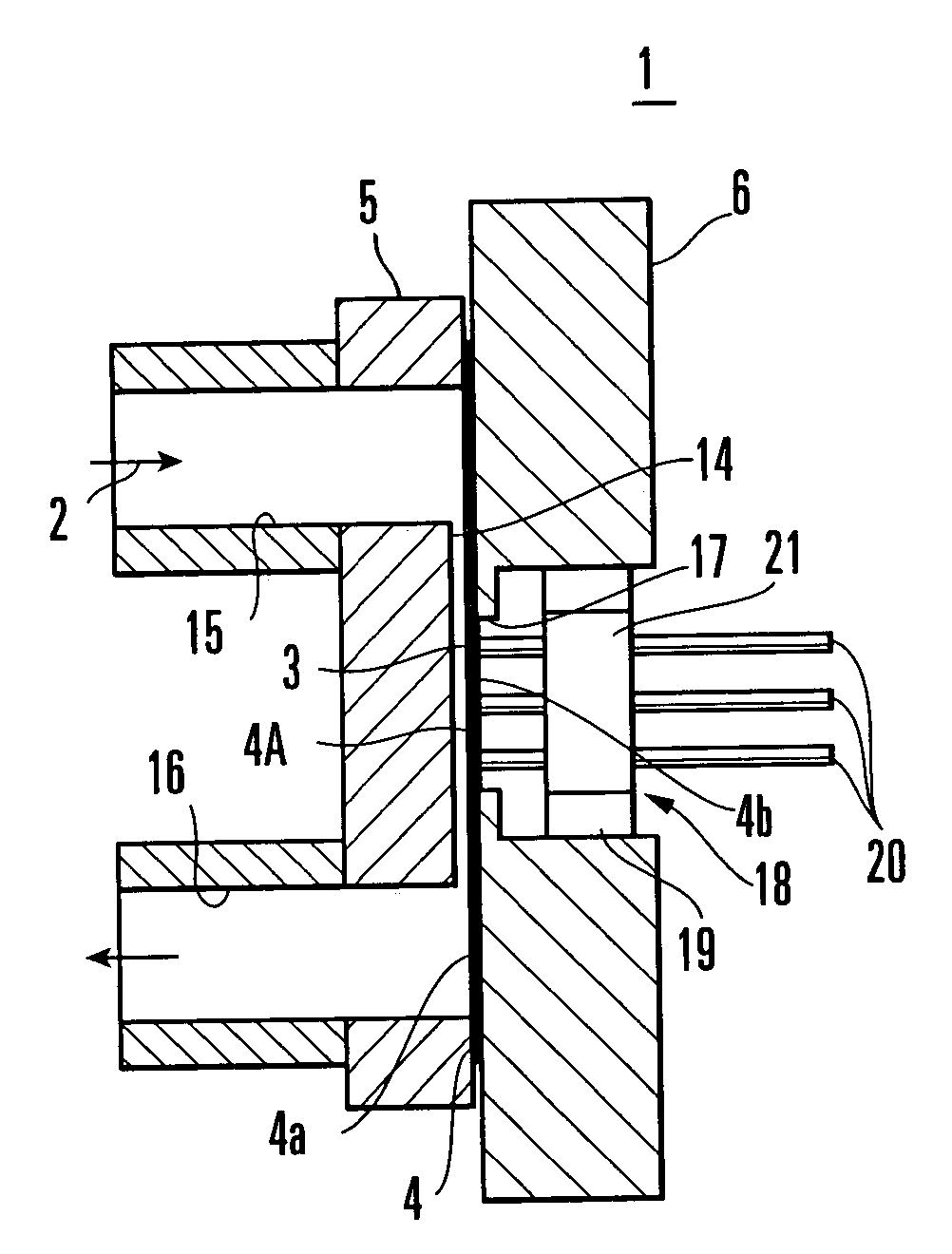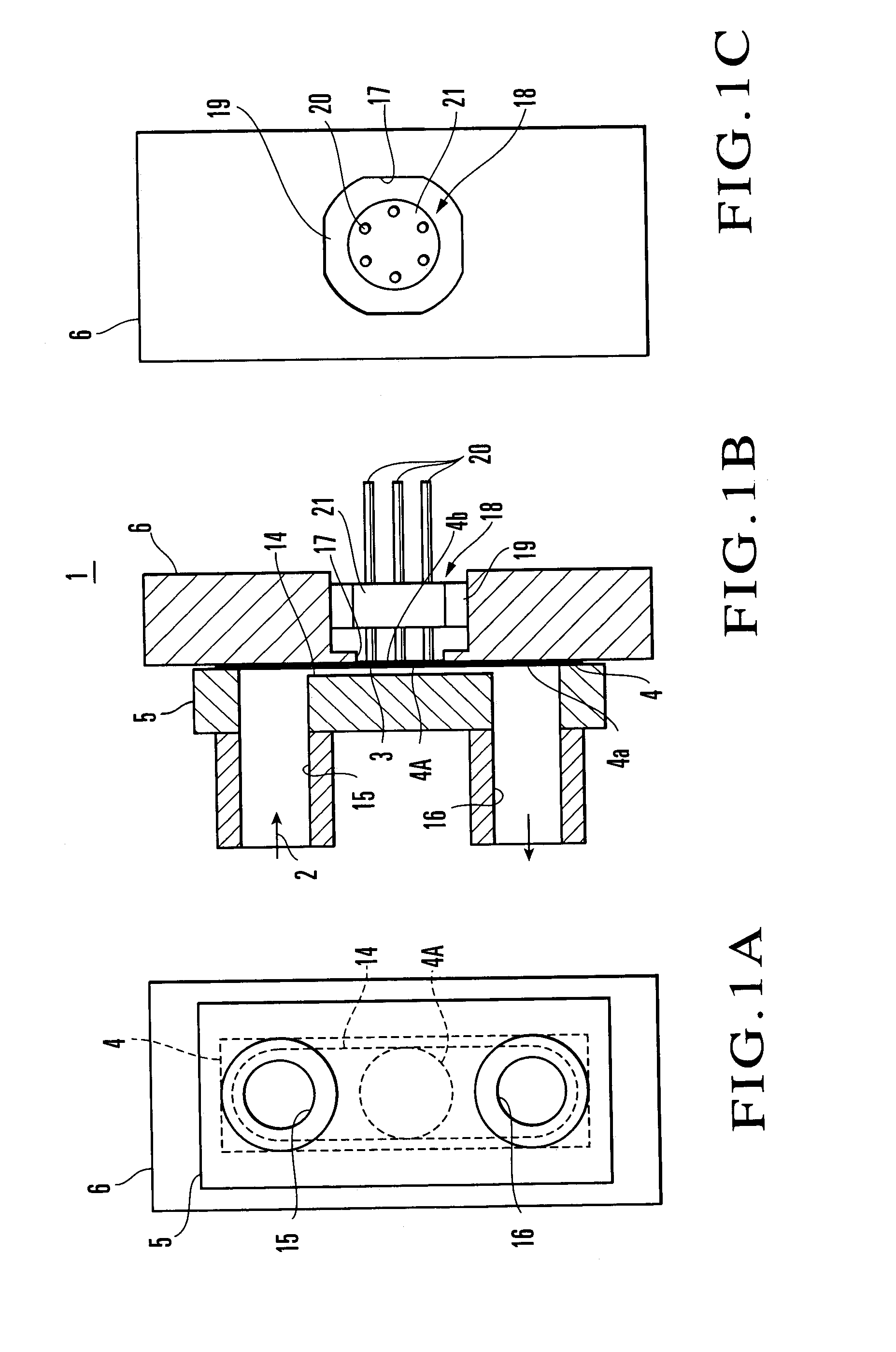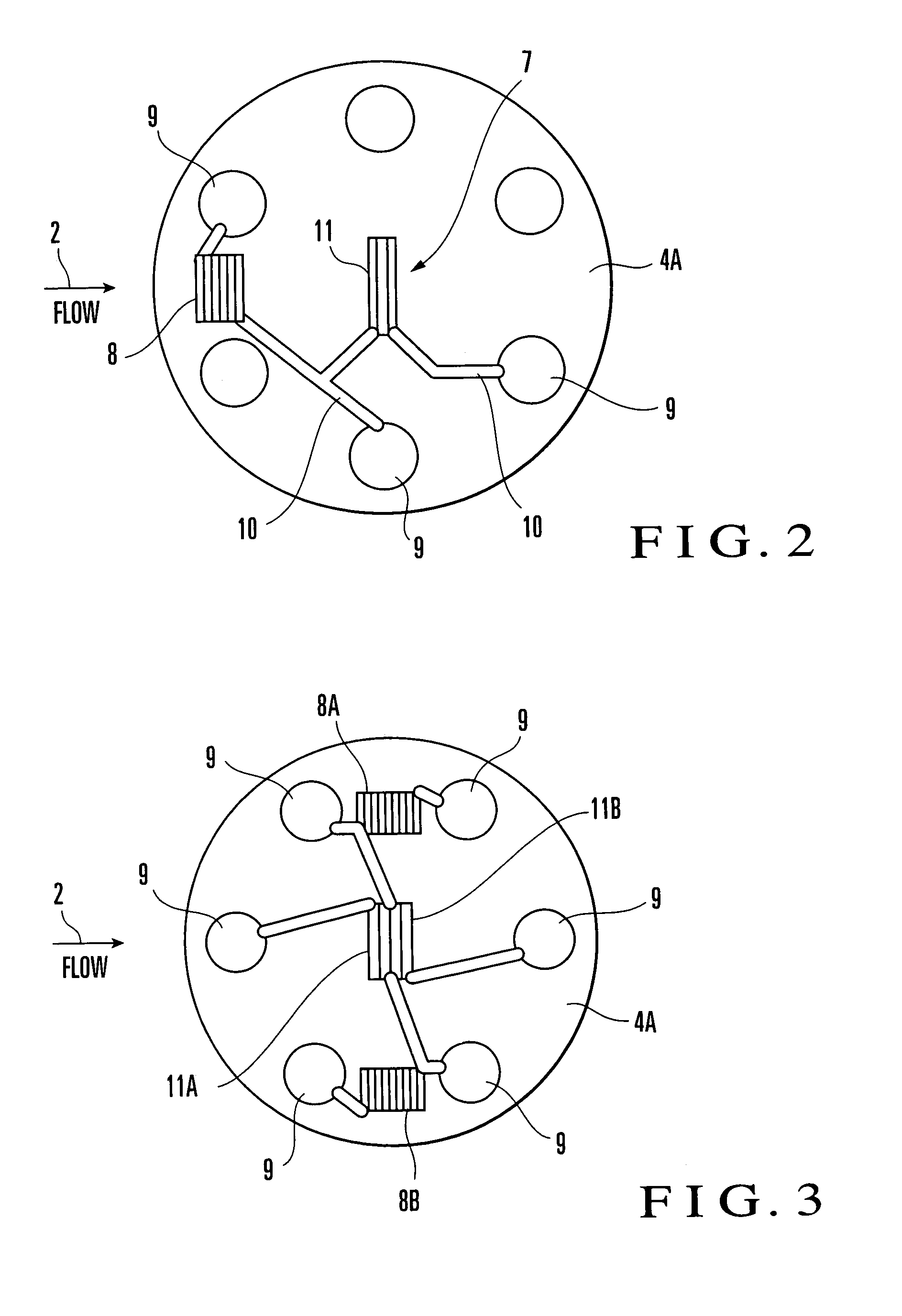Flow sensor
a flow sensor and flow rate technology, applied in the field of flow sensors, can solve the problem that the flow rate sensor cannot be used for corroding gas or liquid, and achieve the effect of less deterioration, less deposited, and stable performan
- Summary
- Abstract
- Description
- Claims
- Application Information
AI Technical Summary
Benefits of technology
Problems solved by technology
Method used
Image
Examples
Embodiment Construction
[0025]The present invention will be described in detail with reference to the drawings.
[0026]FIGS. 1A, 1B, and 1C are front, sectional, and rear views, respectively, showing a flow sensor according to an embodiment of the present invention, and FIG. 2 is a front view of a sensor portion. Referring to FIGS. 1A to 1C and FIG. 2, a flow sensor 1 is constituted by a substrate 4 having a front surface 4a side facing a channel 3 for a measurement target fluid (to be referred to as fluid hereinafter) 2, and a channel forming member 5 and a plate 6 disposed opposedly across the substrate 4. The substrate 4 and channel forming member 5 form a part of the channel 3. The channel forming member 5 and plate 6 are bonded to each other by welding or brazing, or with bolts.
[0027]The substrate 4 forms an elongated rectangular thin plate, and its peripheral portion is bonded to the rear surface of the channel forming member 5. As the material of the substrate 4, one having low thermal conductivity, h...
PUM
 Login to View More
Login to View More Abstract
Description
Claims
Application Information
 Login to View More
Login to View More - R&D
- Intellectual Property
- Life Sciences
- Materials
- Tech Scout
- Unparalleled Data Quality
- Higher Quality Content
- 60% Fewer Hallucinations
Browse by: Latest US Patents, China's latest patents, Technical Efficacy Thesaurus, Application Domain, Technology Topic, Popular Technical Reports.
© 2025 PatSnap. All rights reserved.Legal|Privacy policy|Modern Slavery Act Transparency Statement|Sitemap|About US| Contact US: help@patsnap.com



